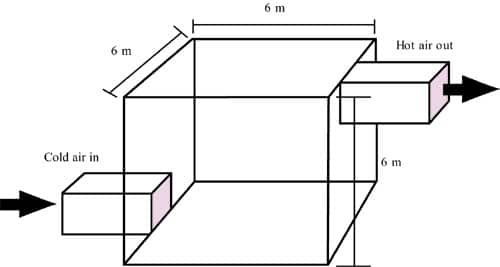 So far, this 21st Century has been a big disappointment. I grew up on the science fiction of the 1950’s and 60’s. Plus I knew that the stories of Jules Verne and H. G. Wells had turned out to be amazingly accurate predictions of real technological advances. So I was expecting that, if I lived long enough to see the 21st Century (no way – I’ll be in my 40’s!), I’d be experiencing a technological paradise, or a post-apocalyptic nightmare, or at least a dull, Big Brother-controlled pseudo-utopia. By 2001 there would be routine space travel, telepathy machines, personal jet packs, and, most important of all, robots to do all the work.Well, it’s 2003 already, and technology has not kept up its end of the deal. I can easily live without the silver suits with the big shoulders, but where are my flying car, my jet pack, and my house-cleaning robot? Government is making headway with the Big Brotherly oppression, but it hasn’t even broken ground for the dull pseudo-utopia. The technology we did get – cell phones and video recorders – merely comprises small improvements on things I could already do when I was a kid: talk on the phone and watch TV. It’s time for the robots!
So far, this 21st Century has been a big disappointment. I grew up on the science fiction of the 1950’s and 60’s. Plus I knew that the stories of Jules Verne and H. G. Wells had turned out to be amazingly accurate predictions of real technological advances. So I was expecting that, if I lived long enough to see the 21st Century (no way – I’ll be in my 40’s!), I’d be experiencing a technological paradise, or a post-apocalyptic nightmare, or at least a dull, Big Brother-controlled pseudo-utopia. By 2001 there would be routine space travel, telepathy machines, personal jet packs, and, most important of all, robots to do all the work.Well, it’s 2003 already, and technology has not kept up its end of the deal. I can easily live without the silver suits with the big shoulders, but where are my flying car, my jet pack, and my house-cleaning robot? Government is making headway with the Big Brotherly oppression, but it hasn’t even broken ground for the dull pseudo-utopia. The technology we did get – cell phones and video recorders – merely comprises small improvements on things I could already do when I was a kid: talk on the phone and watch TV. It’s time for the robots!
It’s the 21st Century, and we’re still using air as the cooling medium for most electronics. I’m not complaining about that. Air is still being used because it does the best job for the money, not because we haven’t invented anything more high tech.
But these days it seems that for large electronic systems, like telecom and data processing equipment, the heat density is so high that we are reaching the limits of air cooling. Not that we can’t blow enough air through an electronics chassis to adequately cool the circuits inside, although that day is not far off either. What I’m referring to is that when you load up a room with network servers, there is so much heat that the room air conditioning system can’t handle it. If you can’t remove all the heat that is generated in the room, then you can’t control the room air temperature, and the electronics will eventually overheat. You can find out more about this worsening trend from the Uptime Institute (www.uptimeinstitute.org).
Various sources report different limits for room air cooling. They range from about 540 watts per square meter (W/m2) up to maybe 2700 W/m2 (about 50 to 250 W/ft2). At the low end, the limits can be blamed on old buildings with undersized air conditioning systems that can’t be upgraded, or that the cooling system is poorly designed to handle dense heat loads. But there is rarely a detailed explanation of the upper end limits. I’m designing products right now with heat density of 3,000 W/m2 and up. How can I sell products that will overheat my customers’ sites?
What is the reason behind the limits of air cooling? Is it the wimpy air conditioning fluids we are stuck using these days to save the ozone layer? Is there some physical property of air that poops out above a certain temperature? Is it government regulation? In other words, who can I blame (besides myself) for data centers and telecom offices on the verge of overheating?
I try to solve every problem by doing an energy balance. In most cases it doesn’t help much, but for getting the heat out of a room, it is pretty good. Let’s start by saying we have a room 6 m wide, 6 m long with a 6 m ceiling (Figure 1). One duct brings in cold air from the air conditioning system, and a second duct takes away the hot air. Someplace outside the room they meet at the air conditioning plant. The amount of air coming in equals the amount of air going out, ignoring any leaks.
Figure 1. Our hypothetical 6 x 6 x 6m room. Incoming air coming equals outgoing air, ignoring any leaks.It is pretty easy to write an equation that tells us the amount of heat that can be removed from the room by the air cooling system.
Q = A V Cp (Thot – Tcold) (1)where:
| Q | = | heat removed from the room |
| A | = | cross-sectional area of the duct |
| V | = | air velocity in the duct |
| = | density of air | |
| Cp | = | specific heat of air |
| Thot | = | air temperature leaving the room |
| Tcold | = | air temperature entering the room |
I know the density and specific heat of air. They don’t change much over the range of temperature we normally deal with, and even when they do, I can look up their values. But what do we plug in for the other parameters of the equation?
Let’s start off with an ordinary size for an air duct: a 0.5 meter square. That is actually pretty big, compared to the ducts in your house. So the duct area is 0.25 m2 as a starting point.
Then we have to pick an air speed for the inlet and outlet vents for the ducts, and an inlet and outlet temperature. Let’s assume we have an infinitely powerful air conditioner and blower, perhaps the unit that makes the Superdome in New Orleans comfortable, so we can choose any velocity and temperature we want.
What else limits our choices, besides our lack of imagination? One not-so-obvious limit on the cooling system is that data centers and telecom offices employ human beings. The people and the electronics are cooled by the same room cooling system. The air temperatures and velocities have to be kept in the narrow range that allows for human comfort.
I am not a human comfort expert, but I have chosen some values that seem right to me. An HVAC engineer might quibble with my numbers, but I think they are in the right ballpark:
- Max. duct velocity:2.0 m/sec (4.5 mph)
- Min. inlet air temp.: 15oC (59oF)
- Max. exit air temp.: 28oC (82oF)
This air speed and temperature range is not going to kill anybody, or even give them the sniffles, but I think you’d get annoyed if you had to sit at a workstation all day with a 2 m/sec wind at 15oC blowing on the back of your neck, or had to work on cabling at the top of a cabinet in 28oC air.
Plugging these values into Equation 1, (density = 1.16 kg/m3 and specific heat = 1000 J/kg-K) I get a heat removal capacity of about 7,500 W. The floor is 6 x 6 m, which is 36 m2. A room with this cooling system can have a heat load of only 210 W/m2. Is that all? How can we get our room up to something reasonable, like 1000 W/m2, or preferably 3,000 W/m2, so I can sell my new product?
|
Table 1. Air Cooling Limited by Human ComfortOne thing we can do is add more ducts, or make the ducts bigger, to get more total air flow, without making the duct velocity higher. Table 1 shows how many ducts we would need to increase the heat removal capacity to a desired level.
The last line in the table is the physical limit for our room. If we made the left wall into one giant inlet duct, and the right wall into one giant exit duct, and connected that 6 x 6 m duct to our infinite air conditioning system, it could sustain a heat load of about 30,000 W/m2. To do that, the whole building would become a wind tunnel, which, although not impossible, would compromise most of the other functions of the building, such as interconnecting data lines.
So let’s back off from that extreme, and say that only half of the left and right walls are occupied by ducts, so that we could still hang occupational safety posters. That would support a heat load of 15,000 W/m2. That is the type of room you need to support the 10,000 W/m2 equipment being introduced these days.
This gloomy scenario hinges on one important assumption . . . We need to worry about human comfort in the room. What if we could kick the humans out and set the air velocity and temperature range only for the safe and reliable operation of the equipment in the room? What happens if we pick the following values?
- Max. duct velocity: 10 m/sec (about 22 mph)
- Min. inlet air temp.: 5oC (41oF)
- Max. exit air temp.: 50oC (120oF)
I chose 5oC so we don’t have to deal with frost formation. Otherwise we might be safe at 0oC or even a little lower, assuming that humidity is controlled to prevent condensation. Telecom equipment would thrive in such an environment, but your maintenance crew definitely wouldn’t stay in that room very long. Table 2 shows the heat removal capacity for such a room:
|
Table 2. Air Cooling Limited by Equipment OperationIf you ignore human comfort (or even survival), the heat removal capacity instantly increases by a factor of about 17, and maybe more. If we eliminate people from the equipment rooms, then the only thing we’d still need to do is to find out where the Superdome bought their infinitely large air conditioner.
It turns out that the weak link in the room cooling system is the presence of humans. This is where the robots of the “21st Century That Should Have Been” come in. If we had been working on robots to do the maintenance in our telecom offices, data centers, and computer rooms, we could be extending the limits of air cooling for electronics right now. Of course, we should make sure to include in our robots a suitable remote control OFF button, anticipating that inevitable moment when they realize humans are the weak link in many other realms as well.
Tony Kordyban is the author of the book, Hot Air Rises and Heat Sinks: Everything You Know About Cooling Electronics Is Wrong (ASME Press). It tells stories similar to this one, including the thermal challenges in developing a telepathic-powered telecom system. All of them are educational. Some are even true.







